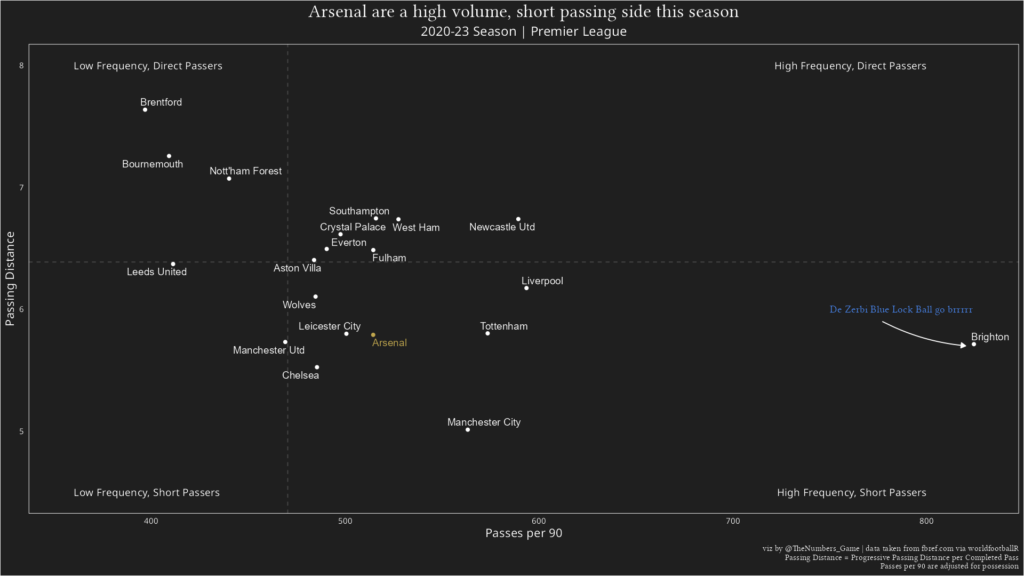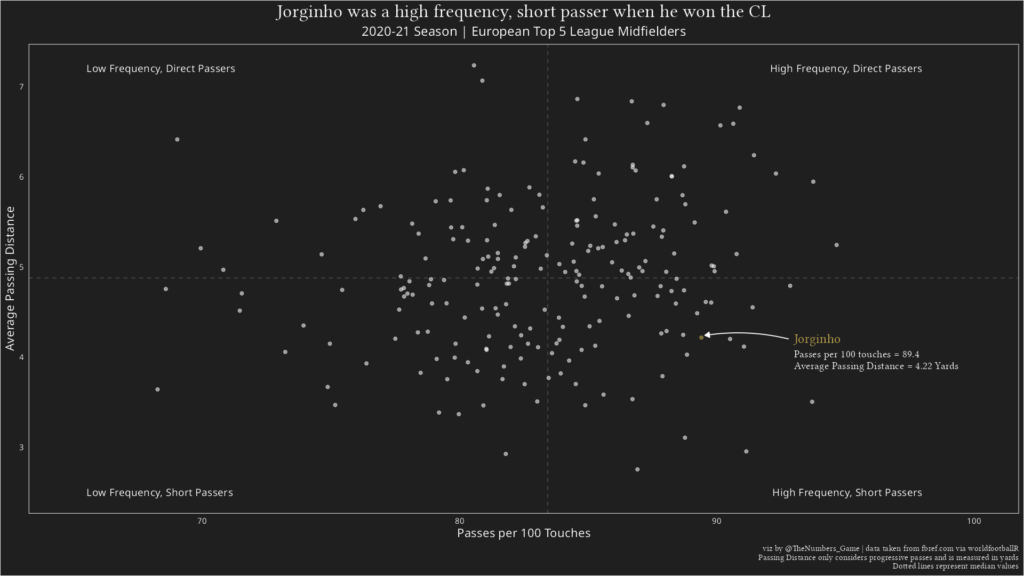Deadline Day, January 31st, 2023. Premier League clubs managed to spend the equivalent of an average 1850’s UK yearly GDP, most of which came down to Chelsea’s activity. Snatching Joao Felix on loan, swiping Noni Madueke from PSV and dumping £60 million on an attacker with only 13 professional goals to his name. That final purchase of Mykhaylo Mudryk was controversial for other reasons, one being Arsenal’s relentless pursuit of the Ukrainian before he joined their London rivals. The sale of Jorginho to the Emirates probably won’t be seen as much of a consolation to Arsenal fans, however.
£12 million saw the 31-year-old Italian move across to Arsenal, making up for the failed pursuit of Brighton’s Moises Caicedo. Jorginho, however, isn’t a bad signing, and a bit of primary data analysis shows how he could play a role in Arteta’s squad.

Outside of winning the Euros with Italy, the peak of Jorginho’s career came with Chelsea’s 2021 Champions League triumph under Thomas Tuchel. In Tuchel’s system, Jorginho and N’Golo Kante formed the central two of a 3-4-1-2 formation. Keeping the ball moving is one of Jorginho’s strengths, with the two-footed midfielder being adept in consistently outputting a high volume of short passes in matches. Over the 2020-21 season, Jorginho had an average passing distance of 4.22 yards, whilst attempting to pass with 89.4 of every 100 of his touches. He liked to pass the ball, but wasn’t tasked with pinging the ball over defensive lines – a possession retainer.

Any team that wishes to maximise Jorginho’s output would be one that likes to have the ball and pass it around, whilst also not requiring him to make direct passes (a 69% long pass completion rate does suggest that he can make direct passes, but at his best, he isn’t required to). Arsenal make more passes per 90 minutes, after adjusting for possession, than Chelsea this season.

Looking at Arsenal’s squad more specifically, Jorginho’s 2021 numbers are closest to Granit Xhaka, although this season he has been asked to play more direct (which is an even greater benefit to Arsenal, who have been slightly more direct on the ball than Chelsea this season). Arteta may task him with playing a similar role to Xhaka in possession, and the Italian has shown that he would be comfortable with that.

Off the ball, Jorginho may have some adapting to do. Aside from the data shown here, Jorginho’s lack of pace has been noted by viewers for a while, and for a team like Arsenal that rely on good transitional recovery, that inability to get back quickly may be an issue. One solution to this is playing Jorginho at the base of a midfield three rather than as part of a double pivot – less ground to run and two midfielders ahead of him to disrupt counter-attacks may help to cover up his lack of speed.
Jorginho this season does get involved in ground and aerial duels, but often comes out the loser – all three of Arsenal’s regular midfielders have a better duel win rate. However, if he is deployed in a similar fashion to Granit Xhaka, he’ll find that he is required to get involved in fewer duels, allowing him to focus more on picking his battles wisely.
Generally, there isn’t much reason to suggest that Jorginho is a horrible signing for Arsenal. Of course, an adaptation grace period will need to be given to the player to allow them to settle into a new system, but once he does, Jorginho’s base level for Arsenal definitely isn’t too low.

